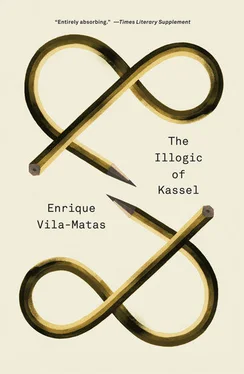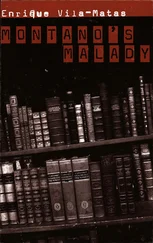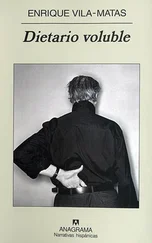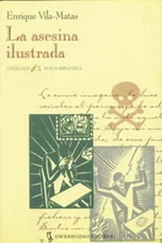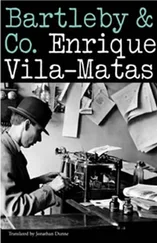I also found Carolyn’s Letter to a Friend , in which she suggested that Documenta 13 was more than a big exhibition; it was actually a state of mind. I was on the verge of believing she had said that for me, since, after all, in a few hours I’d changed into someone enormously enthusiastic about everything he’d seen in Documenta, that great garden of contemporary marvels.
There were emails to answer in my inbox. In one of them, someone wrote to me from Neuchâtel to ask how I was getting on in Kassel and whether I was planning to write about it all when I got home. “If you do decide to, if I were you, I’d forget about genres and remember that every art, every science, operates by means of discourse; if it is practiced for its own sake as art, and if it achieves the highest summit, it is poetry.”
As I read this, I thought that there are some friends who would like for you, not them, to take on great challenges. Still, I couldn’t agree more with the idea of doing without genres. My favorite author was Nietzsche; I could never put his books down when I read him, so when I traveled I preferred to bring books in which he appeared only indirectly, such as Romanticism . To me, W. G. Sebald seemed to be just Nietzsche’s distinguished disciple, though I had to admit he’d managed to give a poetic touch to his romantic pilgrimages. And, thinking of Sebald, I could never forget that lovely text of his on Robert Walser about how Walser seemed truly freed from the burden of himself the night he undertook a journey in a hot air balloon, from Bitterfeld — the artificial lights of whose factories were just beginning to glimmer — to the Baltic coast. A trip over a sleeping nocturnal Germany. “Three people, the captain, a gentleman and a young girl, climb into the basket, the anchoring chords are loosed, and the strange house flies, slowly, as if it had first to ponder something, upward,” wrote Walser, the perfect rambler. For Sebald, that wanderer was born for this hushed journey through the air: “In all his prose works, he always seeks to rise above the heaviness of earthly existence, wanting to float away softly and silently into a higher, freer realm.”
Another more prosaic email contained for the umpteenth time — I’d received no end of emails about this matter — directions to my dinner with Chus, including a detailed map of the neighborhood showing my hotel and the Osteria restaurant, separated by barely three hundred meters. It seemed like a simple trajectory, even though all the street names were in German. I felt insecure, perhaps because — for some reason that escaped me — the sensation of being just another citizen of Kassel had begun to fade. But I wouldn’t say I’d gone back to feeling I was from Barcelona either; rather, I simply felt lost, lost in the center of Europe. In fact, it seemed increasingly obvious to me — as in the old song — that to get out of Europe I would have to get out of the forest, but to get out of the forest I’d have to get out of Europe.
Sometimes, when I noticed a change of light in my frustrated “thinking cabin,” I felt lost, and that lost feeling led me to see myself as one more dead European.
I stopped to think about One Page of Babaouo , António Jobim’s strange installation, and the more my imagination started to spin around it, the more interesting it seemed. An experience from the past helped: my visit to Salvador Dalí in May of 1978, an incursion into his house on the occasion of the publication of a Spanish translation of his book Le mythe tragique de l’Angélus de Millet . In light of what Dalí told me on that visit, One Page of Babaouo started to acquire greater intensity, which led me to recall that there are scenes from our past that with time — as we come across information we didn’t have access to before — unexpectedly take on greater depth. One of those past scenes took place in 1963, at 87 Paseo de Gracia, in Barcelona’s long-gone Libreria Francesa. Some classmates had taken me there, and to my absolute surprise, after an exchange of passwords, a sales clerk in blue overalls with a pencil behind his ear brought out from under the counter books by Sartre and Camus banned by Franco’s censors.
I was so surprised by that sudden apparition of forbidden books that the scene was etched in my memory forever. Years later, when I read that Diderot’s Encyclopédie had been banned in France in 1759 and Paris booksellers sold it from under their counters, there appeared to be a thread directly linking that eighteenth-century booksellers’ gesture with the scene in repressed 1960s Barcelona.
An event, banal though it might be, is normally the consequence of others that precede it. That’s why those drawings by William Kentridge that I’d heard Boston talk about attracted me, those works in which he deliberately left a trace of a previous drawing. It was as if Kentridge were saying: I don’t want to hide the fact that many other drawings preceded this one, and it comes from them.
When back in May of ’78 I was able to interview Salvador Dalí in his Cadaqués house, the painter kept going on about a Venetian painting: “A while ago, just before you arrived, I was looking again at Giorgione’s Tempest . There is a soldier, and a naked woman holding a baby. It is a pivotal painting, though our fellow countrymen don’t know it.”
Pivotal? I didn’t know who Giorgione was either, but I pretended otherwise. Years later, I saw The Tempest in Gallerie dell’Accademia in Venice and discovered it was a very enigmatic painting, with that strange scene of a man and a woman (with no connection to each other) and that storm brewing in the background.
Yesterday, that interview with Dalí unexpectedly took on greater depth when I read by chance Mallarmé’s recommendation to Édouard Manet that is for some the founding statement of the art of our time: “Paint, not the thing, but the effect it produces.”
I immediately thought of Manet’s The Railway , that painting that dumbfounded the critics of the time. In it, a young mother looks at us, while her daughter stares at the plume of steam from a passing train. In the foreground, the little girl has her back to us. In the background, there’s the great cloud of smoke that the train has left as it chugs through the center of Paris.
I noticed that the structure of The Railway reminded me of Giorgione’s The Tempest . Looking it up, I saw I was not mistaken, many people had said the same. And then I thought if only Manet’s picture had an actual trace of what someone had done before. A sketch or a hint of Giorgione would allow us to see the direct connection between the two, in the same way Duchamp’s Nude Descending a Staircase would acquire greater depth if it contained an actual trace of Manet on the canvas. And might it not be that Dalí, lost in a very dark Spain, wanted to bequeath to me that day the effect that introduced modernity, the crucial Giorgione effect?
Se non è vero, è ben trovato , Dalí was known to say. That was, in fact, the expression he quoted to me in that interview when I told him that his book formed a sort of “obligatory perimeter,” while leaving free in the center of language a great “shore of imagination,” perhaps with no other object than for us to play on it. To this, Dalí replied that his wife Gala, when she read the book, had said: It would be great if what he wrote were true, but if in the end it turned out not to be, the book would be greater still.
Immersed in the subjects of Europe and death, I recalled a secondary character from Joseph Roth’s tale “The Bust of the Emperor,” the Jewish publican Solomon Piniowsky, that simple man with his natural intelligence, whom Count Morstin, gaining confidence in his ever reasonable replies, asked for his opinions on the most diverse subjects. “Listen to me, Solomon! That hateful Darwin fellow who says people are descended from apes, well, he seems to be right after all.” And Solomon Piniowsky always had something interesting to say.
Читать дальше
